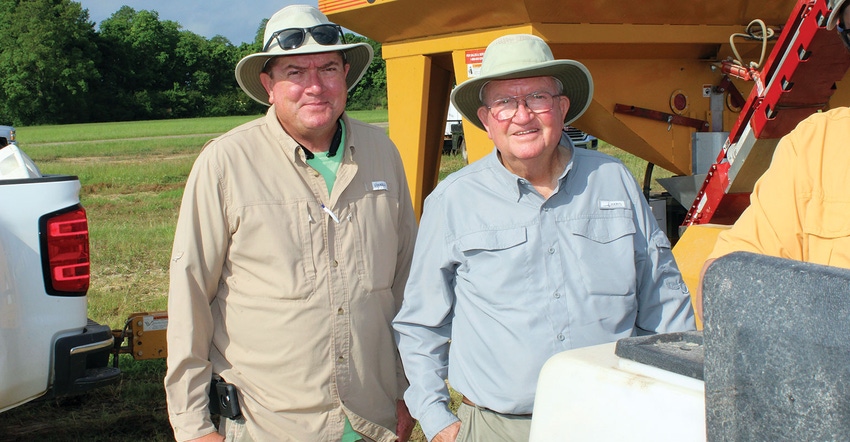
Wintertime provides opportunities for planning and preparation for Joe Morgan of Hattiesburg, Miss. It is also a time to look back on the previous year to see what worked and what could be improved.
Morgan, who started farming in 1965, raises peanut and cotton on M&M Farms along with his wife, Patricia, and his son, Joe Morgan Jr.
"Sometimes, we plant corn," Morgan says, "but usually, we plant peanuts and cotton. Peanut is the main crop that determines our rotation.
"For our rotation plan, we plant peanuts for one year out of three on the same ground. Sometimes we plant peanuts every other year, but we'll have about the same acreage we had last year in total, around 1,000 acres in peanuts and 1,650 in cotton."
Last year, the farm had around 1,098 acres in peanuts and 1,520 acres in cotton.
Varieties and market outlook
Georgia 06 is Morgan's variety of choice.
"We may plant a new high oleic variety; I'm not sure yet," he said. "There are some new varieties out that may be good to try."
Malcolm Broome, executive director of Mississippi Peanut Growers Association, said a couple of new high oleic varieties have now been grown for a season with the promise of yields like the most widely grown variety, Georgia 06G, which may be an incentive to grow more acres.
"Also, a growth regulator from BASF is showing increased yields in field trials where peanut vines tend to grow quite tall," Broome says. "Seemingly, the slowed growth is causing the plants to move that energy into the peanut itself."
The expected 2020 acreage for Mississippi peanuts is about 20,000 acres.
"The market outlook will continue about like 2019," he said. "Supply of peanuts still needs to be lowered to see a price increase, but there might be a slight increase for a grower planting a new variety for seed. We still expect the price per ton to be about $400."
Technology, conservation practices
M&M Farms uses RTK GPS on all its tractors and sprayers as well as some precision planting equipment.
"RTK allows us to strip-till our fields, and then plant over the strip-till accurately," Morgan said. "Also, it is extremely important to have RTK for digging peanuts. Our cotton planter has several Precision Planting attachments, including DeltaForce, vDrive, SpeedTube, SmartFirmer, and CleanSweep.
"We don't do as much disking anymore. We run vertical tillage, and then we strip-till all our crops before we plant. We burn it down with Roundup upfront, and sometimes, we just run the strip-till. It just varies depending on the field."
Depending on the year, Morgan sometimes plants a cover crop, usually rye, but he was unable to plant any last fall due to the weather.
"We plant a cover crop in some spots that can be problem areas," he said. "In 2019, our peanuts and cotton yields were good, even though some were planted late on June 10. With 35% of our peanuts left to dig, it started raining, and those had to be dug from wet soil conditions. The last 130 acres of peanuts were dug at 177 days after planting, which was far too late from the usual 145 days. By the time we got out of the field, it was too late to plant a cover crop this year."
Morgan's John Deere sprayer works well in fields that are not perfect squares.
"Our fields are all shapes and sizes from 2 acres up to 240 acres," he said. "The last sprayer we got is a John Deere R4038 with ExactApply nozzles on a 120-foot boom. All the nozzles cut off individually down the boom. We really like it, especially in small, odd-shaped fields. You waste fewer chemicals by the individual nozzles cutting off rather than the 10-foot section of the boom possibly overlapping the crop. Some of the chemicals we use on peanuts can stunt the cotton, so it has been better from that standpoint too."
This year Morgan hopes to be back in the field planting by May 1, as usual.
"We like to be finished by May 20, but we try to go by soil temperature mainly to determine when we start planting," he said. "If we could plant, we'd love to plant peanuts the last week of April if it is warm enough. Hopefully, that will happen this year."
About the Author(s)
You May Also Like




